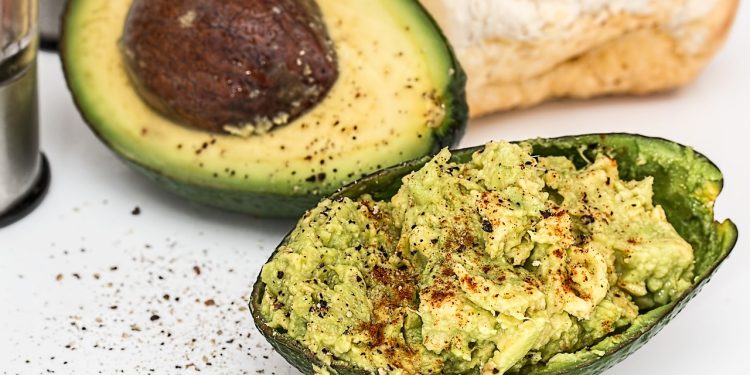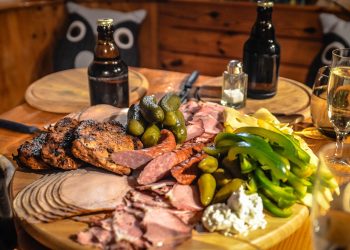The ketogenic (keto) diet has surged in popularity, offering an effective approach to weight loss, improved energy levels, and better metabolic health. This low-carb, high-fat diet works by shifting your body into a state of ketosis, where fat becomes the primary source of fuel. But embarking on a keto journey requires careful planning to ensure nutritional balance and sustainability. A well-structured meal plan can help you navigate the diet’s requirements while keeping your meals satisfying and delicious.
Understanding Keto Basics
The keto diet revolves around macronutrient ratios that typically consist of:
- Fats: 70-80% of daily calories
- Protein: 10-20% of daily calories
- Carbohydrates: 5-10% of daily calories
This composition forces the body to rely on fat for energy instead of carbohydrates, producing molecules called ketones in the process. The key to success lies in choosing foods that fit these ratios while maintaining variety and nutritional balance.
Keto-friendly staples include:
- Healthy fats: Avocados, olive oil, coconut oil, nuts, and seeds.
- Proteins: Eggs, fatty fish, poultry, and grass-fed meats.
- Low-carb vegetables: Leafy greens, zucchini, broccoli, and cauliflower.
- Dairy: Full-fat cheeses, cream, and butter.
- Avoid: High-carb items like bread, pasta, rice, starchy vegetables, and sugary snacks.
Building Your Keto Meal Plan
Creating a sustainable meal plan begins with a clear structure. Aim to include a balance of fats, proteins, and low-carb vegetables in every meal. Here’s a step-by-step guide:
1. Start with Breakfast
- Example 1: Scrambled eggs cooked in butter with spinach and avocado.
- Example 2: Greek yogurt topped with chia seeds and a handful of berries.
- Tip: Prep breakfast items in advance for busy mornings, such as egg muffins or keto-friendly smoothies.
2. Plan for Lunch
- Example 1: Grilled chicken salad with olive oil, avocado, and mixed greens.
- Example 2: Lettuce wraps filled with tuna salad, cheese, and cucumber slices.
- Tip: Incorporate leftovers from dinner to simplify your lunch preparation.
3. Keep Dinner Satisfying
- Example 1: Baked salmon with a side of roasted Brussels sprouts and cauliflower mash.
- Example 2: Zucchini noodles with a creamy Alfredo sauce and grilled shrimp.
- Tip: Experiment with keto-friendly recipes to keep dinners exciting and varied.
4. Incorporate Snacks
- Example 1: A handful of almonds or macadamia nuts.
- Example 2: Cheese slices paired with cucumber sticks.
- Tip: Choose snacks that are easy to prepare and portion-controlled to avoid overindulgence.
Meal Prep Strategies
Planning and preparing your meals in advance is key to staying on track with keto. Follow these strategies to simplify the process:
1. Batch Cook Proteins
- Grill or bake a large batch of chicken breasts, salmon fillets, or ground beef. Store them in portioned containers to use throughout the week.
2. Prep Vegetables
- Wash, chop, and store vegetables in airtight containers for quick access. Zucchini noodles, cauliflower rice, and pre-washed greens are excellent options.
3. Stock Your Pantry
- Keep keto staples like olive oil, almond flour, coconut flour, and keto-friendly sweeteners on hand for quick meal preparation.
4. Use Time-Saving Tools
- Invest in an Instant Pot, slow cooker, or air fryer to streamline cooking and reduce meal prep time.
Tips for Staying Consistent
Transitioning to a keto lifestyle can be challenging, especially during the initial adjustment period. Here are some tips to maintain consistency:
1. Hydrate and Replenish Electrolytes
- The keto diet can lead to fluid and electrolyte loss, especially in the early stages. Drink plenty of water and include foods rich in sodium, potassium, and magnesium, such as avocados and leafy greens.
2. Listen to Your Body
- Hunger levels may fluctuate as your body adapts to ketosis. Eat when you’re hungry and stop when you’re full, focusing on nutrient-dense foods.
3. Plan for Social Situations
- When dining out or attending gatherings, choose dishes that align with your diet, such as grilled meats and salads. Communicate your dietary needs when necessary.
4. Track Your Progress
- Use apps or journals to monitor your food intake, macronutrient ratios, and weight loss progress. This can help you stay accountable and make necessary adjustments.
Sample 7-Day Keto Meal Plan
Here’s a sample meal plan to kickstart your keto journey:
Day 1
- Breakfast: Omelet with cheese, spinach, and mushrooms.
- Lunch: Caesar salad with grilled chicken (no croutons).
- Dinner: Grilled salmon with asparagus and garlic butter.
- Snack: Hard-boiled eggs.
Day 2
- Breakfast: Keto smoothie with almond milk, avocado, and cocoa powder.
- Lunch: Turkey and cheese lettuce wraps.
- Dinner: Zucchini lasagna with ground beef and ricotta.
- Snack: Celery sticks with almond butter.
Day 3
- Breakfast: Scrambled eggs with bacon and avocado.
- Lunch: Spinach salad with feta, olives, and olive oil dressing.
- Dinner: Roast chicken thighs with cauliflower rice.
- Snack: Cheese cubes.
Day 4
- Breakfast: Chia pudding with coconut milk and raspberries.
- Lunch: Tuna salad with mixed greens.
- Dinner: Pork chops with sautéed zucchini.
- Snack: A handful of walnuts.
Day 5
- Breakfast: Fried eggs with sautéed spinach.
- Lunch: Grilled shrimp over arugula with lemon vinaigrette.
- Dinner: Beef stir-fry with broccoli and soy sauce.
- Snack: Keto fat bombs.
Day 6
- Breakfast: Keto pancakes with butter and sugar-free syrup.
- Lunch: BLT salad with avocado and ranch dressing.
- Dinner: Baked cod with a side of roasted Brussels sprouts.
- Snack: Pepperoni slices and cheese.
Day 7
- Breakfast: Greek yogurt with chia seeds and strawberries.
- Lunch: Chicken Caesar lettuce wraps.
- Dinner: Ribeye steak with garlic butter and creamed spinach.
- Snack: Almonds.
Embracing the Keto Lifestyle
Creating a keto-friendly meal plan doesn’t have to be overwhelming. With proper planning, a well-stocked kitchen, and a repertoire of simple yet delicious recipes, you can enjoy the benefits of this diet without feeling deprived. By focusing on whole, nutrient-dense foods and listening to your body’s needs, you’ll build a sustainable lifestyle that supports your health and wellness goals.










